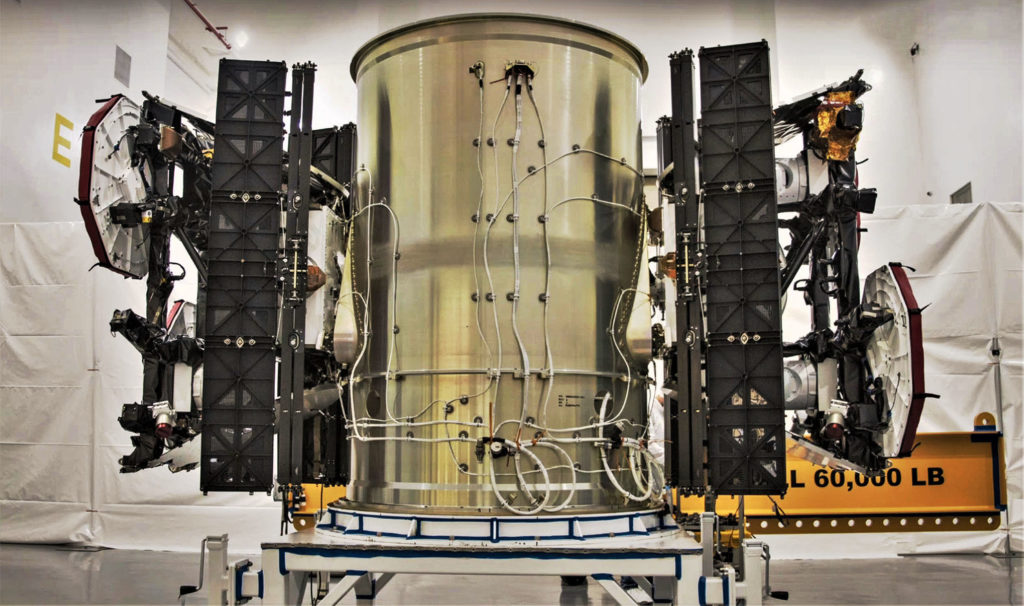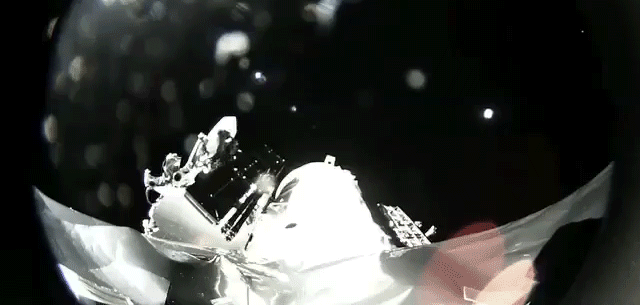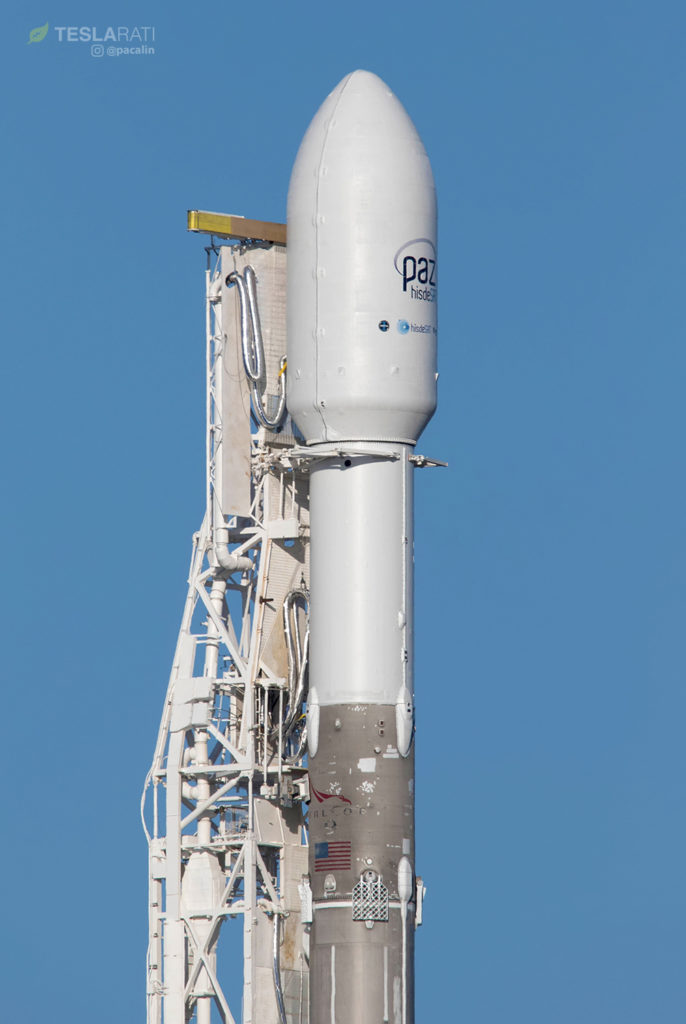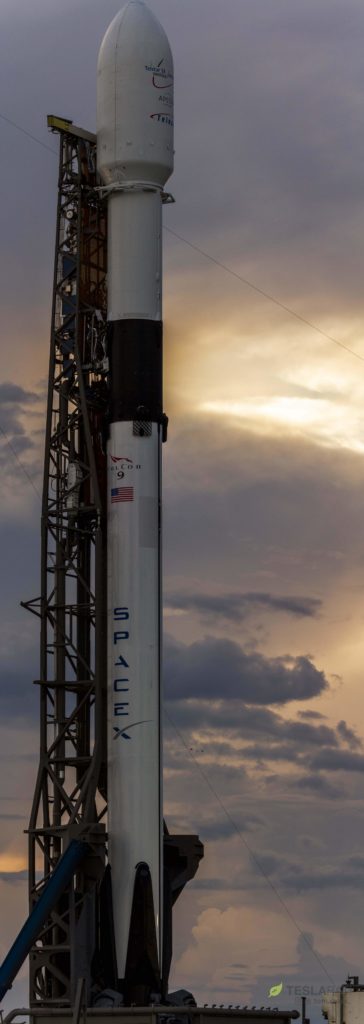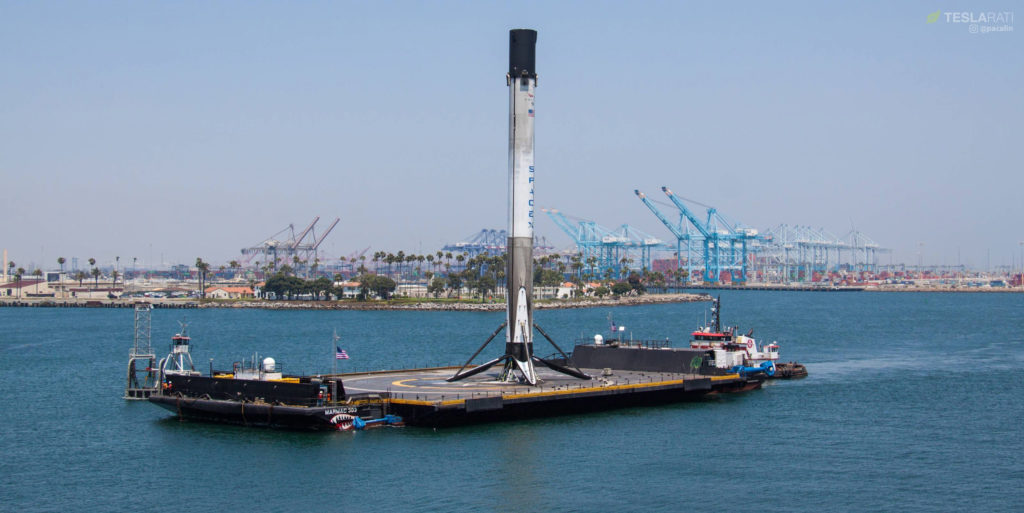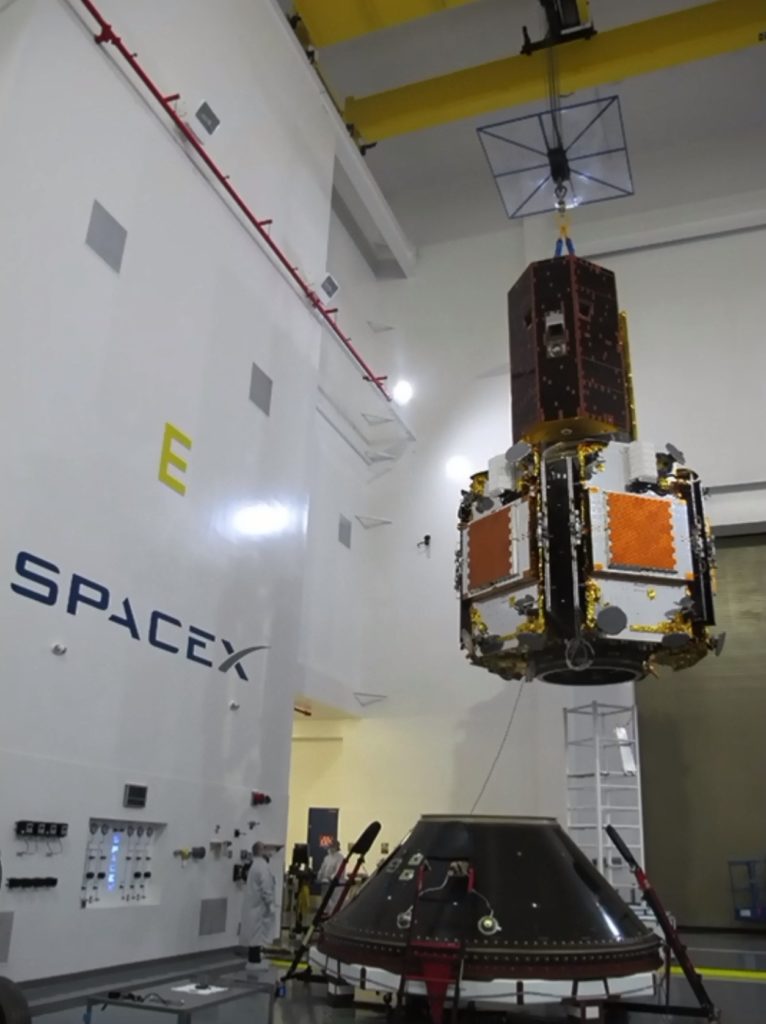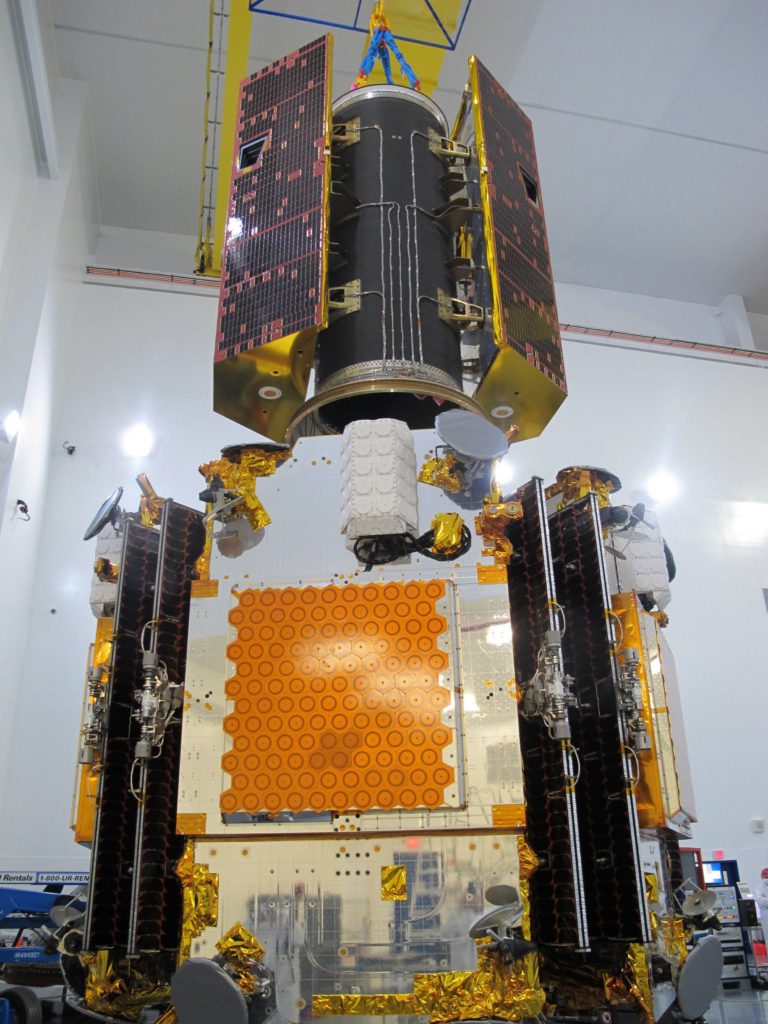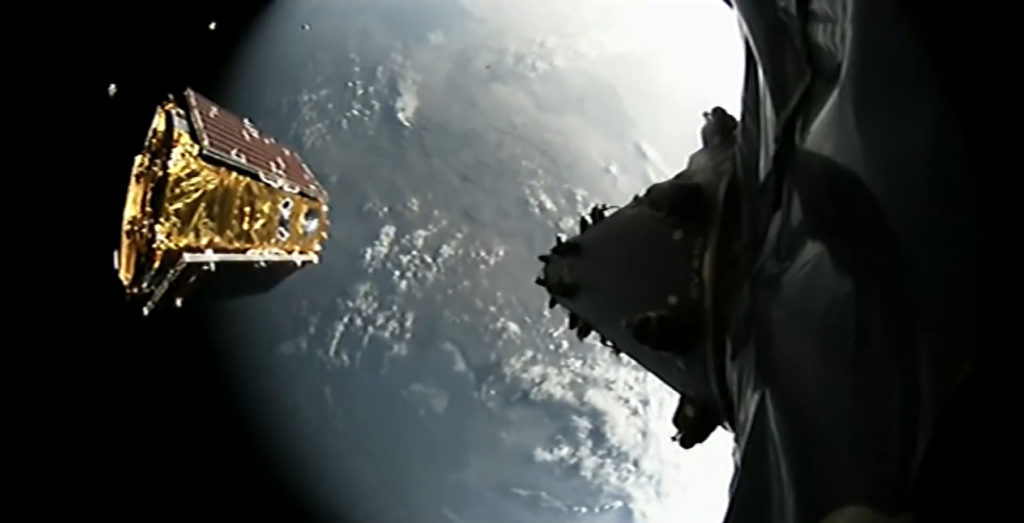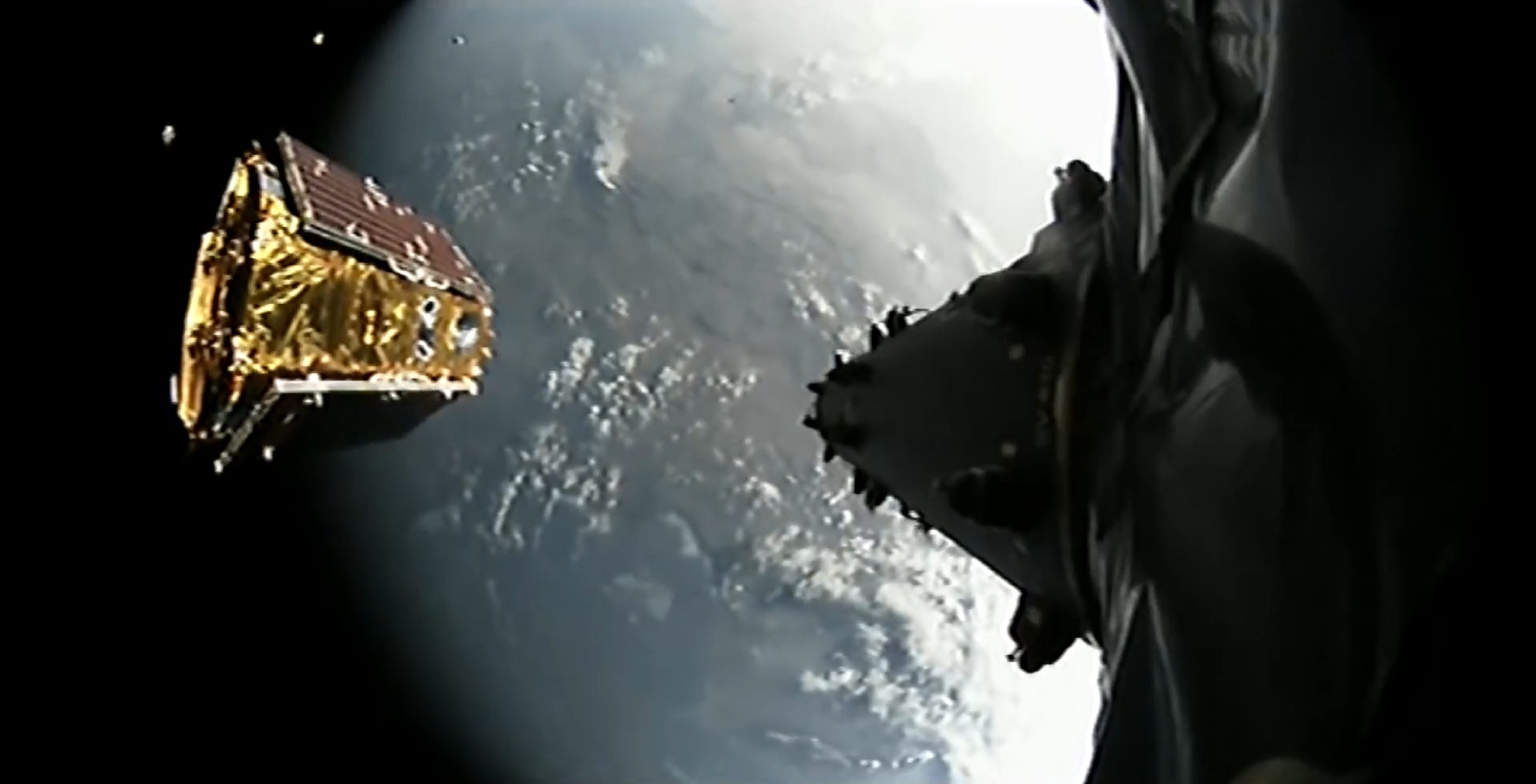
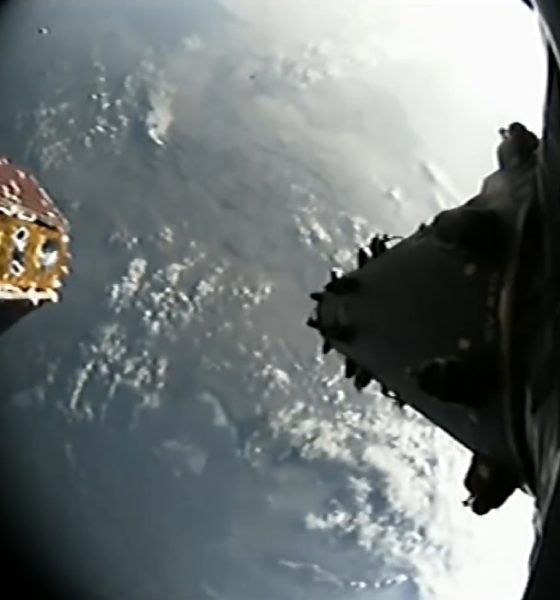
News
SpaceX’s Starlink satellites “happy and healthy” as Elon Musk fires managers and VP
Reuters is reporting that SpaceX’s Starlink internet satellite constellation project experienced significant organizational upheaval earlier this year, triggered by fundamental disagreements between CEO Elon Musk and executives overseeing Starlink as to how exactly SpaceX should approach the complex system’s development.
Despite the report’s primary focus on reorganization and Musk’s decision to simply fire 5+ key executives, SpaceX employees that spoke with Reuters were of the opinion that the two demo satellites – named Tintin A and B – are operating nominally in orbit more than half a year after launch.
The 2 test sats launched in Feb, Tintin A and B, seem to be healthy. "We’re talking with them every time they pass a ground station, dozens of times a day," one employee said. In the first week they streamed "4k YouTube and played ‘Counter-Strike: GO’ from Hawthorne to Redmond."
— Joey Roulette (@joroulette) October 31, 2018
Musk apparently believed that Starlink’s development timeline ought to be far shorter than certain senior executives overseeing the program were planning for. As a result of continuing success with the first two prototype satellites that launched in March 2018, a SpaceX engineer paraphrased Musk as being of the opinion that Starlink “can do the job with cheaper and simpler satellites, sooner.”
Rajeev Badyal, Vice President of SpaceX’s satellite program before being fired by Musk in June 2018, apparently wanted another three full iterations of prototype satellites to be launched and tested prior to beginning serious mass-production and launching the first real batch of Starlink satellites. While his extremely cautious approach may have had undeniable long-term benefits, it would also be a major hindrance in a field now rife with competitors like Telesat, OneWeb, LeoSat, and more, all eager to be first to offer internet services from low Earth orbit (LEO).
- SpaceX’s first two Starlink prototype satellites are pictured here before their inaugural launch, showing off a thoroughly utilitarian bus and several advanced components. (SpaceX)
- One of the first two prototype Starlink satellites separates from Falcon 9’s upper stage, February 2018. (SpaceX)
Prior to joining SpaceX in 2014, Badyal – like dozens of others now working on SpaceX’s Starlink constellation – worked at Microsoft for almost two decades, developing the consumer electronics and software company’s hardware programs (Zune, Xbox, Surface, etc.). In retrospect, it may not come as a huge surprise that a senior hardware development manager at Microsoft might be moderately risk-averse or at least methodical – while Surface and other more modern hardware programs have more functional iterative life cycles (usually annual), Xbox infamously spent nearly seven years between the launch of the Xbox 360 and Xbox One.
On the ground hardware side of Starlink development, user terminals, ground terminals, and other high-volume networking equipment could certainly benefit from someone like Badyal’s extensive experience developing high-volume consumer electronics like Xbox, but the Starlink satellites themselves are a different story. As a technology essentially without precedent, it could ultimately be almost anachronistically expensive to ‘refine’ the design of constellations of hundreds or thousands of high-bandwidth internet satellites before ever actually building and operating such a system.
A clash of approaches – Musk vs. Silicon Valley
What Musk instead seems to prefer – as demonstrated through his strategic direction of Tesla and SpaceX – is an approach where hardware development projects explicitly avoid striving for perfection with the first general iteration of a new system. Tesla did not spend years prototyping and performing limited tests in secret before building Model 3 as their first car ever – high-volume desirable electric vehicles simply did not exist. With SpaceX, Musk chose to explicitly develop a very small operational rocket – Falcon 1 – rather than very tediously attempting to go from scratch to Falcon 9 or BFR.
For Starlink, a Musk-style development program would fast-track a bare-minimum baseline for the satellite constellation and its ground systems, mass-producing and launching hardware that would inevitably be lacking in many ways but would still be able to act as a proving ground for the broader concepts at stake. One step further, the FCC’s Starlink constellation grant depends on an odd but unwavering requirement that SpaceX (or any other prospective LEO constellation-operator) launch at least 50% of all of any planned constellation within six years of receiving a license.
- SpaceX’s first Starlink prototypes launched in late February aboard a flight-proven Falcon 9 booster. (Pauline Acalin)
- Falcon 9 Block 5 will be absolutely critical to the success (and even the basic completion) of Starlink. (Tom Cross)
- B1048 returns to port on drone ship JRTI after its successful July 2019 launch debut. (Pauline Acalin)
For SpaceX, that means that the basic ability to commercially operate Starlink is fundamentally at risk unless the company can somehow launch a minimum of 2213 (and up to ~5950) Starlink satellites between 2018 and 2024, an almost unfathomable challenge. Assuming ~500kg per satellite and perhaps 20 satellites per Falcon 9 launch, completing 50% of Starlink by 2024 would demand – without interruption – a minimum of one launch every two weeks for five years, mid-2019 to mid-2024. As such, every month spent prototyping and refining can essentially be viewed as a month where SpaceX didn’t launch dozens of Starlink satellites in pursuit of initial operational capabilities.
The news coming from Reuters’ reporting is ultimately a very positive look at Starlink, aside from Musk’s characteristically brusque and uncompromising approach to program management and leadership. Employees spoke proudly of the operational health and overall success of the two Tintin satellites already on orbit, noting that “they’re happy and healthy [and functioning as intended], and we’re talking with them [dozens of times a day] every time they pass a ground station”. Contrary to tenuous evidence to that suggested one of the two satellites had suffered an anomaly, preventing it from operating its electric thrusters, it appears that both satellites are doing just fine.
- SpaceX is already fairly experienced with launching multi-satellite missions and building custom payload adapters. (NASA)
- During a normal Iridium NEXT launch, two groups of five satellites are stacked on top of each other. Here, the top stack was replaced by NASA/DLR’s GRACE-FO spacecraft. (NASA)
- A spectacular view of Iridium NEXT satellites during orbital deployment. Starlink deployment will be even more of a spectacle. (SpaceX)
Up next for Starlink is the launch of a second batch of demonstration satellites, expected to occur “in short order” according to an official SpaceX comment on the matter.
“Given the success of our recent Starlink demonstration satellites, we have incorporated lessons learned and re-organized to allow for the next design iteration to be flown in short order.” – SpaceX spokesperson Eva Behrend
Musk’s ultimate hope with this reorganization is to push Starlink to begin operational satellite launches as early as mid-2019, an ambitious goal to say the least. Understandably, the intent with such an expedited schedule would be to continuously modify, update, and improve Starlink satellite, terminal, and network designs at the same time as they are being built and operated. Much like SpaceX and Tesla, this helps to ensure that the ultimate result of development is a rapid initial product offering eventually followed by a highly-optimized ‘finished’ product.
For prompt updates, on-the-ground perspectives, and unique glimpses of SpaceX’s rocket recovery fleet check out our brand new LaunchPad and LandingZone newsletters!

News
Tesla Model Y Standard stuns in new range test, besting its Premium siblings
Tesla’s newer vehicles have continued to meet or exceed their EPA estimates. This is a drastic change, as every 2018-2023 model year Tesla that Edmunds assessed did not meet its range estimates.
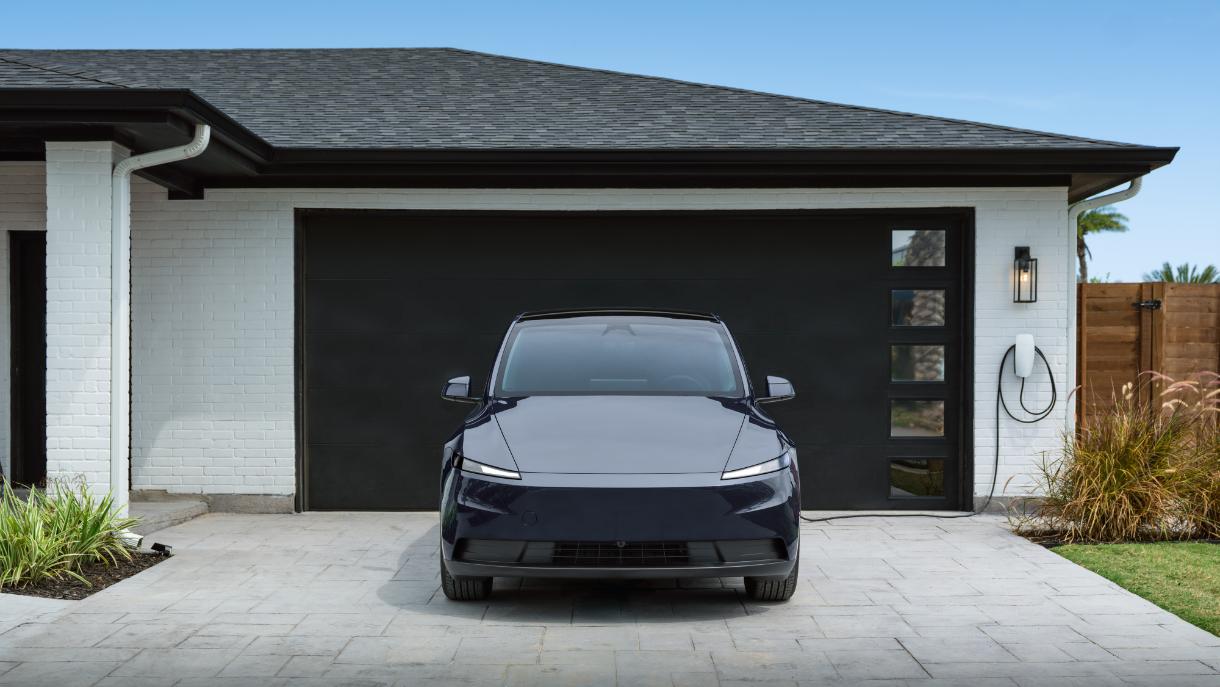
The Tesla Model Y Standard stunned in a new range test performed by automotive media outlet Edmunds, besting all of its Premium siblings that are more expensive and more luxurious in terms of features.
Testing showed the Model Y Standard exceeded its EPA-estimated range rating of 321 miles, as Edmunds said it is the “longest-range Model Y that we’ve ever put on our loop.” In the past, some vehicles have come up short in comparison with EPA ranges; for example, the Model Y’s previous generation vehicle had an EPA-estimated range of 330 miles, but only drove 310.
Additionally, the Launch Series Model Y, the first configuration to be built in the “Juniper” program, landed perfectly on the EPA’s range estimates at 327 miles.
It was also more efficient than Premium offerings, as it utilized just 22.8 kWh to go 100 miles. The Launch Series used 26.8 kWh to travel the same distance.
It is tested using Edmunds’ traditional EV range testing procedure, which follows a strict route of 60 percent city and 40 percent highway driving. The average speed throughout the trip is 40 MPH, and the car is required to stay within 5 MPH of all posted speed limits.
Each car is also put in its most efficient drive setting, and the climate is kept on auto at 72 degrees.
“All of this most accurately represents the real-world driving that owners do day to day,” the publication says.
With this procedure, testing is as consistent as it can get. Of course, there are other factors, like temperature and traffic density. However, one thing is important to note: Tesla’s newer vehicles have continued to meet or exceed their EPA estimates. This is a drastic change, as every 2018-2023 model year Tesla that Edmunds assessed did not meet its range estimates.
Tesla Model Y Standard vs. Tesla Model Y Premium
Tesla’s two Model Y levels both offer a great option for whichever fits your budget. However, when you sit in both cars, you will notice distinct differences between them.
The Premium definitely has a more luxurious feel, while the Standard is stripped of many of the more premium features, like Vegan Leather Interior, acoustic-lined glass, and a better sound system.
You can read our full review of the Model Y Standard below:
Tesla Model Y Standard Full Review: Is it worth the lower price?
News
Xpeng CEO: Tesla FSD 14.2 has developed “near-Level 4” performance
While acknowledging that imperfections remain, the Xpeng CEO said FSD’s current iteration significantly surpasses last year’s capabilities.
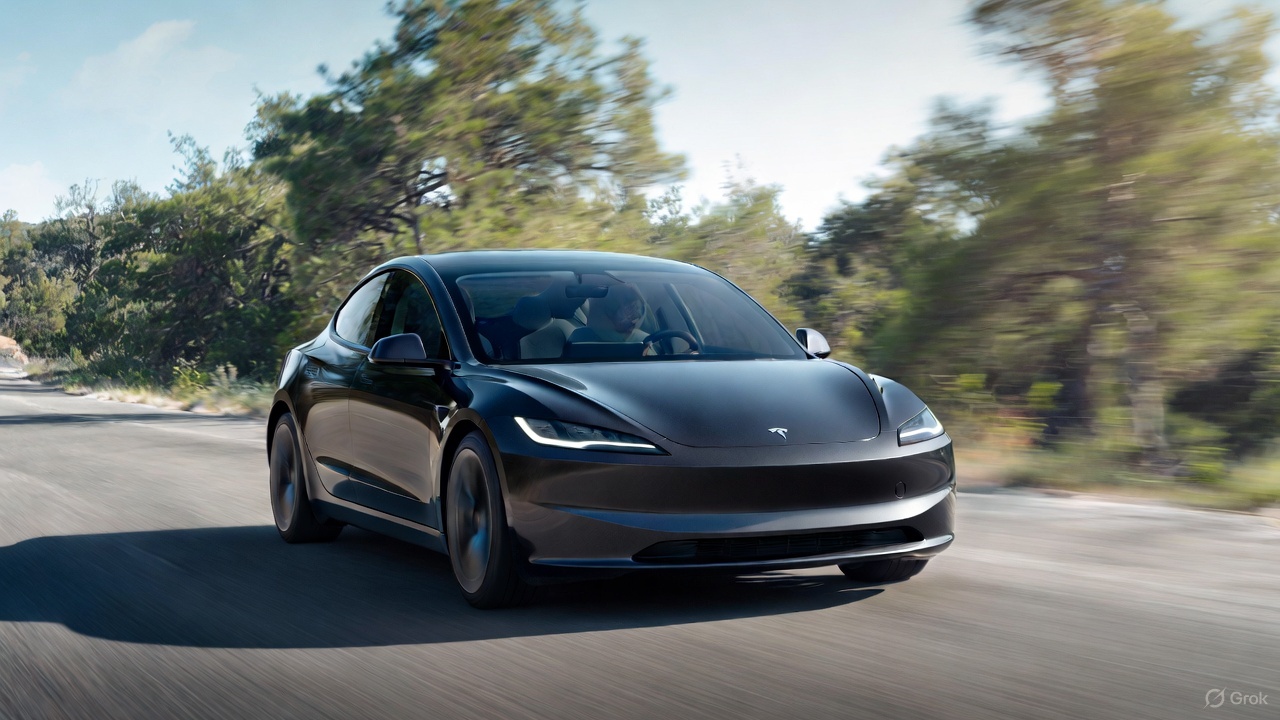
Xpeng CEO He Xiaopeng has offered fresh praise for Tesla’s Full Self-Driving (FSD) system after revisiting Silicon Valley more than a year after his first hands-on experience.
Following extended test drives of Tesla vehicles running the latest FSD software, He stated that the system has made major strides, reinforcing his view that Tesla’s approach to autonomy is indeed the proper path towards autonomy.
Tesla FSD closing in on Level 4 driving
During his visit, He test-drove a Tesla equipped with FSD V14.2. He also rode in a Tesla Robotaxi. Over roughly five hours of driving across Silicon Valley and San Francisco, He said both vehicles delivered consistent and reassuring performance, a notable improvement from his experience a year earlier.
According to He, Tesla’s FSD has evolved from a smooth Level 2 advanced driver assistance system into what he described as a “near-Level 4” experience in terms of capabilities. While acknowledging that imperfections remain, the Xpeng CEO said FSD’s current iteration significantly surpasses last year’s capabilities. He also reiterated his belief that Tesla’s strategy of using the same autonomous software and hardware architecture across private vehicles and robotaxis is the right long-term approach, allowing users to bypass intermediate autonomy stages and move closer to Level 4 functionality.
He previously tested Tesla’s FSD V12.3.6 and Waymo vehicles in California in mid-2024, noting at the time that Waymo performed better in dense urban environments like San Francisco, while Tesla excelled in Silicon Valley and on highways.
Xpeng’s ambitious autonomy roadmap and internal challenge
The Silicon Valley visit also served as a benchmark for Xpeng’s own autonomy ambitions. He stated that Xpeng is looking to improve its VLA autonomous driving system to match the performance of Tesla’s FSD V14.2 within China by August 30, 2026. Xpeng is poised to release its VLA 2.0 smart driving software next quarter, though He cautioned that the initial version will not be able to match FSD V14.2’s capabilities, as noted in a CNEV Post report.
He also added a personal twist to the goal, publicly challenging Xpeng’s autonomous driving team. If the performance target is met by the 2026 deadline, the CEO stated that he will approve the creation of a Chinese-style cafeteria for Xpeng’s Silicon Valley team. If not, Liu Xianming, head of Xpeng’s autonomous driving unit, has pledged to run naked across the Golden Gate Bridge, He noted.
News
Another Tesla Model 3 variant sold out for January 2026 in China
A look at Tesla China’s order page shows that new Model 3 LR RWD orders now have an estimated delivery date of February 2026.
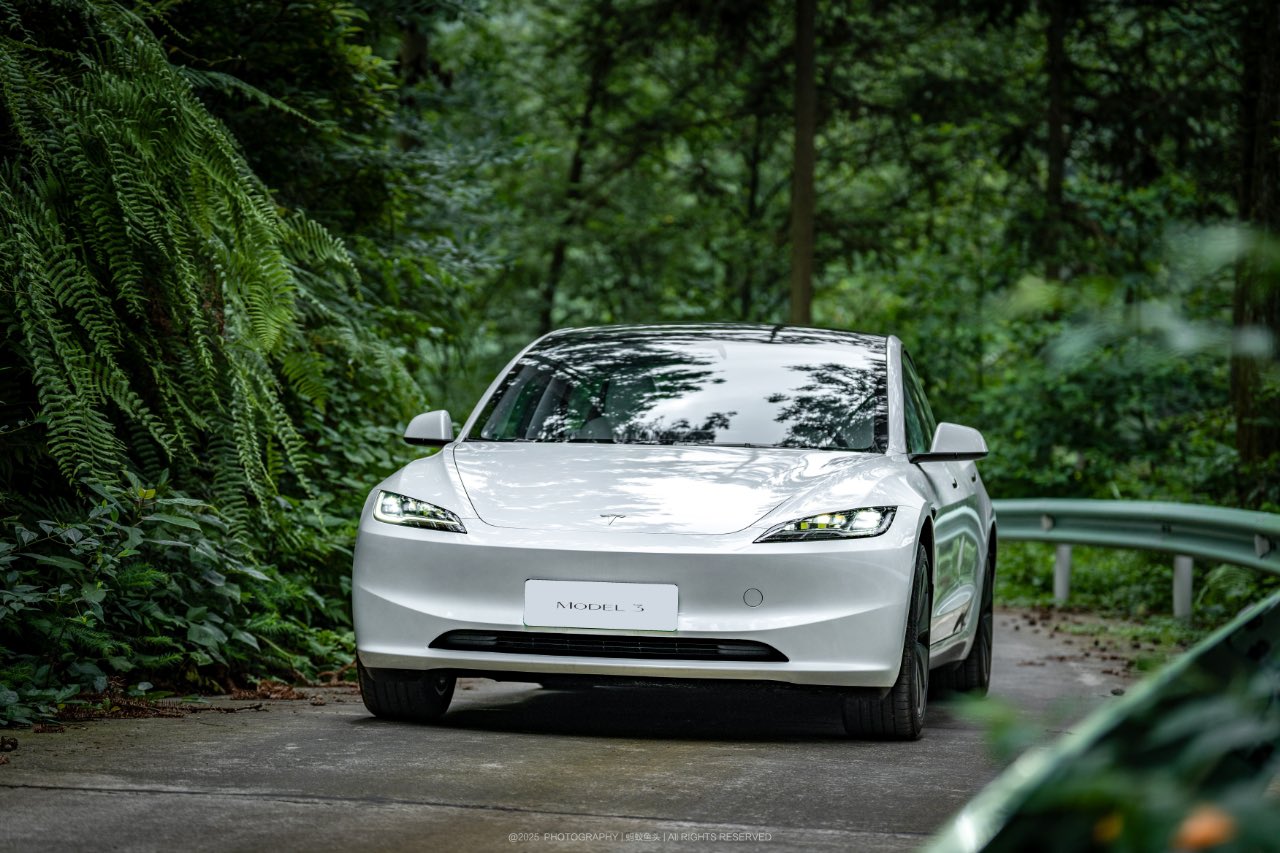
Another Tesla Model 3 variant in China appears to have sold out for January 2026, with the vehicle now showing an estimated delivery date of February 2026 for new orders. This bodes well for the all-electric sedan, which has maintained notable sales despite more affordable rivals like the Xiaomi SU7 and its crossover sibling, the Model Y.
Model 3 LR RWD joins February 2026 queue
A look at Tesla China’s order page for the all-electric sedan shows that new Model 3 Long Range Rear Wheel Drive orders now have an estimated delivery date of February 2026. Priced from RMB 259,500 ($36,810), the LR RWD sits as the second-lowest-priced trim in Tesla China’s four-variant Model 3 lineup. The move follows a similar delivery timeframe for the Model 3 Performance, which remains the most expensive option for the vehicle, as noted in a CNEV Post report.
The estimated delivery dates of the two remaining Model 3 variants remain unchanged for now. The base RWD version, starting at RMB 235,500, and the LR AWD variant, priced from RMB 285,500, both continue to list estimated delivery times of 4-6 weeks. Tesla China, for its part, has continued to list in-stock Model 3 vehicles and is actively encouraging buyers to select inventory units for delivery before the end of the year.
Model Y delays and policy shifts
Delivery timelines for the Model Y in China are also stretching into 2026. All customized Model Y variants now show February 2026 as their estimated delivery date, except for the entry-level version, which still lists January 2026. Tesla has been urging customers since November to prioritize purchasing inventory vehicles, a push aimed at maximizing year-end deliveries.
Timing matters for Chinese buyers due to upcoming changes in government incentives. China’s new energy vehicle purchase tax exemption will be scaled back in 2026, which means customers who take delivery next year could face higher tax costs compared to those who are able to receive vehicles before the end of the year.
As per data from the China Passenger Car Association, Tesla recorded retail sales of 73,145 vehicles in November, down 0.47% year over year. From January through November, Tesla’s retail sales in China totaled 531,855 units, a 7.37% year-over-year drop.
